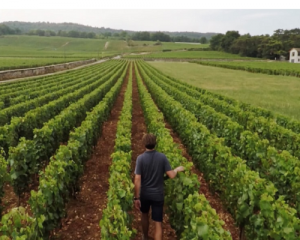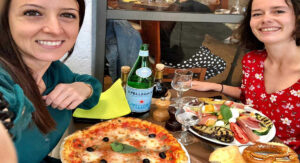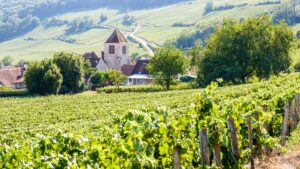
It’s easy to fall into the trap of seeing wine only as a world of classicism and established prestige. Whilst this could be said for regions such as France’s Bordeaux, Burgundy, and Champagne, there has been a surge of fresh faces and vine renaissance elsewhere in the country that deserves our full attention. Patrick Bouju is a pioneer of wine making in Auvergne, a sub-region of the Loire where the chance to rediscover a terroir and experiment with superb wine has never been greater. Let’s get a closer look at this inspirational domain and the movement it has set off.
Last year, we observed an emerging trend at auction for natural Auvergne wines, with several of these going under the hammer for some impressive bids. Proof that bottles from this part of the Loire are becoming increasingly coveted. Here is a look at Patrick Bouju and his Domaine de la Bohème, one of the foremost figures in Auvergne’s wine renewal.
Patrick Bouju founded his Domaine de la Bohème in 2004, but establishing himself at the property was a more gradual process, stretching from the 1990s to settling in full-time in 2008. Initially working as an IT technician, it comes as no surprise that Patrick’s transition from computer desk to the open air took a little while to put into place. For around a decade, he was committed to building his wine making knowledge at the weekend, though clearly this wasn’t a simple hobby. Learning much of what he now knows through his own methods and experimentation, he came across certain difficulties and spoiled a few of his vinifications. The process was further complicated by his self-imposed rule to work entirely without the use of sulphur. All of this trial and error came good in the end, though, with Patrick forging his very own path in a world that some fear is falling victim to a kind of standardisation. He went on to inspire, and even train, other top Auvergne vintners such as Aurélien Lefort, François Dhumes, and Vincent Marie.
Patrick Bouju is now one of this movement’s best-known names, largely thanks to the success of his négoce wines (wines vinified using grapes that are cultivated by another grower). Naturally curious and deeply passionate about his vocation, Patrick has used the négoce as a way of testing out different kinds of wine. The grapes for this side of his wine making come from all over France, mostly from grape-growing friends. This range adds yet more complexity to the rare and fine cuvées produced from grapes grown at the estate itself.
Deep roots cultivated naturally
Patrick Bouju’s 5 hectares of vineyard are shared across three communes – Egliseneuve-près-Billom, Chauriat, and Corent – chosen following the vintner’s personal preference. This came after a careful search for ‘the best terroirs – known and forgotten – of the Puy-de-Dôme’. The domain mostly comprises mature vines, some of which have been around for over 120 years, planted quite densely (10,000/ha). The soils are rich in volcanic material such as basalt, chalk, and clay, and they are worked with the help of a horse. La Bohème is the domain’s landmark cuvée, and its parcel contains centenary Gamay vines planted at 450 metres of altitude.
Diversity has also been a key objective when it comes to grape varietals. Patrick produces Chardonnay, Pinot noir, and Gamay, as well as lesser-known characters like Mirefleurien, Limberger, Damas rouge, Damas noir, Gamay Fréau and Gamay de Bouze. The richness of this selection is Patrick’s way of fighting against what he sees as a standardisation in wine. Plant quality is given utmost importance at Domaine de la Bohème, especially since some of the vines survived the phylloxera blight.
The vines are grown organically with grass between the rows, and the only treatments used are copper-based products, fermented plant extracts, and tisanes made from nettles, horsetail, and comfrey. These are applied to strengthen the plants’ defences. No herbicides or synthetic, chemical products are taken anywhere near the vineyard. Biodiversity is actively encouraged, and most of the work is done by hand.
Natural vinifications
The philosophy that carries this work in the vineyard is also applied in the winery, with the same search for authenticity and a natural expression of this unique terroir. Grapes are vinified by individual parcels using native yeasts and long extractions. The resulting wines are deep, complex, and characterful. With no sulphites added during vinification or bottling, this low-intervention method allows the vines and their fruit to speak for themselves.



